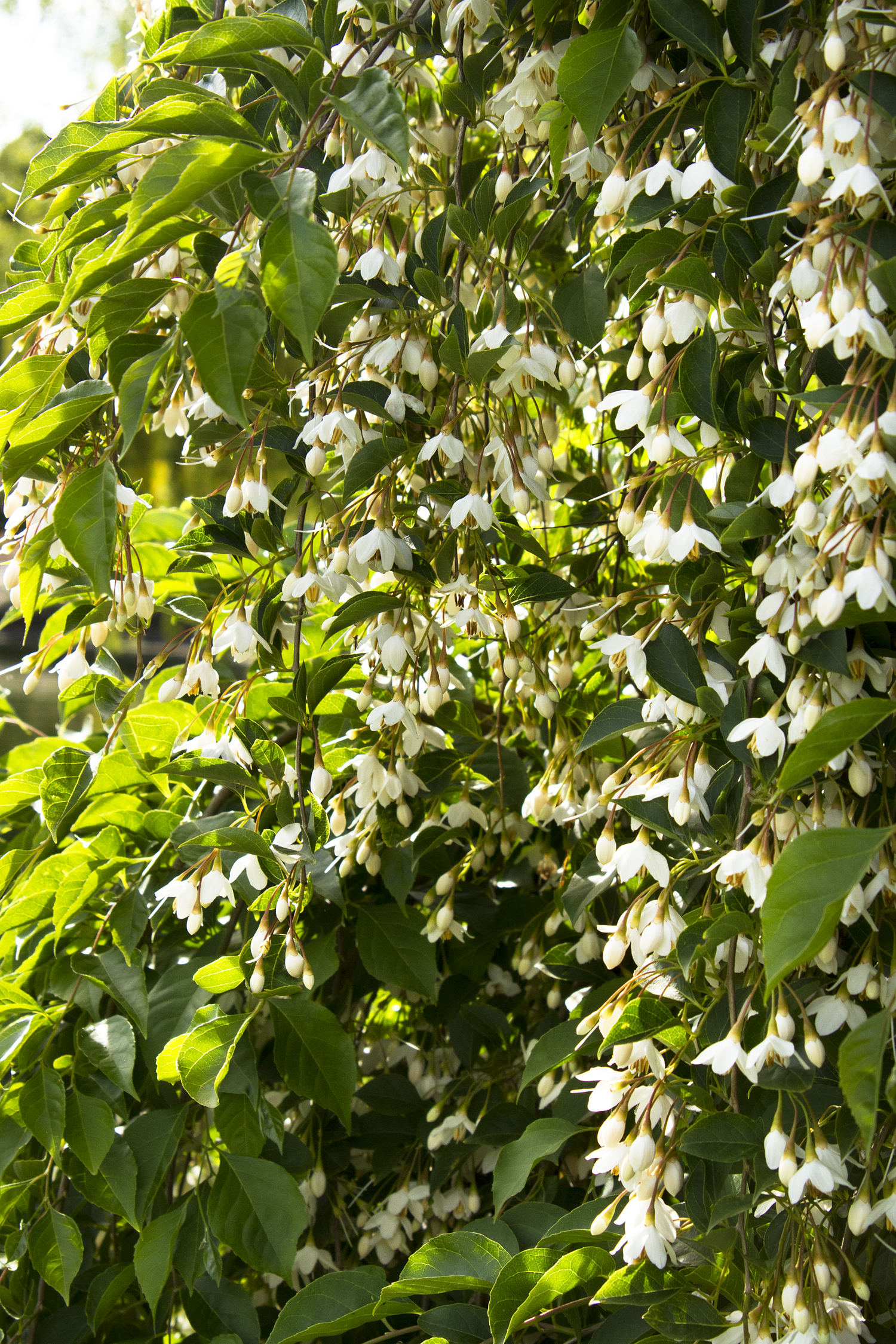japanese snowbell tree care
Provide a site sheltered from cold dry winds. The Japanese Snowbell is a deciduous flowering tree with a relatively compact habit that can be vase-shaped when young but with low horizontal branching and a more broadly rounded crown with age.

Evening Light Japanese Snowbell Spring Blooming Trees Small Ornamental Trees Fragrant Flowers
It can be planted in zones 6 to 8.

. Styrax japonicus Spring Showers. Water young trees regularly during their first year. Though not ornamental they are often profusely produced.
Japanese snowball appreciates veiled light and soil that stays cool in summer. 3 ½ feet back from the face of the curb. 4 As you back fill the hole tamp the soil lightly but DO NOT pack it too tight.
It grows up to 30 feet in height and 30 feet in spread. A full sun to part shade lover this plant is best grown in medium moisture humus-rich acidic well-drained soils. If the soil is compacted tightly then the roots will have a more difficult time becoming established.
Pruning which augments this flat-topped habit does not detract the least bit from the trees natural beauty. Marleys Pink produces loads of blushed pink flowers with bright red calyces and a cotton candy fragrance. With their pretty white flowers and pleasant aroma Japanese Snowbell trees are a great low-maintenance choice for small lots.
Japanese snowbell tree wont tolerate drought. Leaves can yellow chlorosis if tree is planted in soil that is too alkaline. Volunteer seedlings often come up under old trees.
Styrax japonicus J L Weeping PP23755. In areas where the sky is often covered planting in a clear spot is possible. Growing 8-10 tall with a 4-5 spread this lovely ornamental tree has elegant flowering branching that trail down.
5 feet from underground utility lines. Japanese Snowbell is a small deciduous tree that slowly grows from 20 to 30 feet in height and has rounded canopy with a horizontal branching pattern Fig. Examine your snowbell tree for ambrosia beetles one pest that can damage the tree even though Japanese snowbells are typically considered trouble free.
Prune your Japanese snowbell tree lightly as severe pruning is not necessary. Its oversized glossy green foliage turns bright yellow in the fall. When nature fails to provide at least an inch of rain in a week supply 10 gallons of water to the plants root zone.
7 ½ feet from driveways 10 feet recommended 20 feet from street lights and other existing trees. 3 Snowbell trees like a soil thats highly acidic to minimally alkaline which you can amend with peat or another organic material. It requires consistently moist but not soggy soil for best growth.
Planting it near a tree with small leaves will give it light shade which is perfect. It is best to do this in late winter or early spring before new growth begins. 15 feet from house or building.
This enchanting ornamental tree has a horizontal branching structure and showy white bell-shaped flowers that stand out against its dark green leaves. The lower branches of the Styrax japonicus can be. Supply the tree with wet or constantly moist soil that is well-drained.
10 feet from power poles. When choosing a location keep in mind that the Japanese Snowbell has a moderate growth rate. Great flowering tree for cottage gardens or woodland gardens.
This tree is moderately salt tolerant. Prune away stems from the center of the tree that cause crowding as a means of creating an open center. Attractive fruit in late summer and yellow fall color add to the all-season beauty of this tree.
It prefers moist acidic well-drained soil in the full sun to partial shade. Prefers full sun to light shade and moist acid rich well-drained soil. They look best in spring but maintain their leaves into the fall.
When dried stored over winter and sown in spring they produce a fine crop of seedlings. Once established it only needs occasional watering during the summer Perfect as a specimen plant or for beds and borders. 19 rows Lovely white bells that bloom that dangle from horizontal branches are perfect for looking up into.
In order to shape the growth Japanese Snowbell can be pruned. It prefers a loamy soil that is highly acidic to slightly alkaline. The fruits are small drupes.
Strong direct sun is not well coped with. It casts a light shade. With lower branches removed it forms a more vase-shaped patio-sized shade tree.

Japanese Snowbell Growing Tips On Japanese Snowbell Tree Care White Flowering Trees Tree Care Flowering Trees

Bonsai Garden Home Of Fuchsia Bonsai By Kath Van Hanegem Bonsai Bonsai Garden Bonsai Art

Japanese Snowbell Tree Monrovia Japanese Snowbell Tree Monrovia Plants Plants Plant Catalogs

Deciduous Trees Landscaping Plants Yard Design

Japanese Snowbell Monrovia Japanese Snowbell Monrovia Plants Trees To Plant Plant Catalogs

Styrax Japanese Snowbell Trees To Plant Flowering Trees Plants

Japanese Snowbell Tree Balloon Flowers Garden Journal Serenity Garden

Japanese Snowbell Japanese Tree Plants Fast Growing Trees

Japanese Snowbell Beautiful Gardens White Gardens Monrovia Plants

Marley 39 S Pink Japanese Snowbell Ornamental Trees Small Ornamental Trees Spring Hill Nursery

Japanese Snowbell Tree Small Yard Flowering Trees Myrtle Tree






